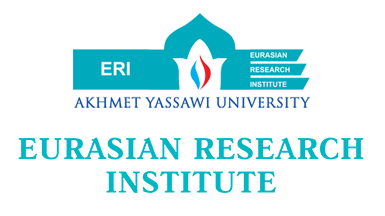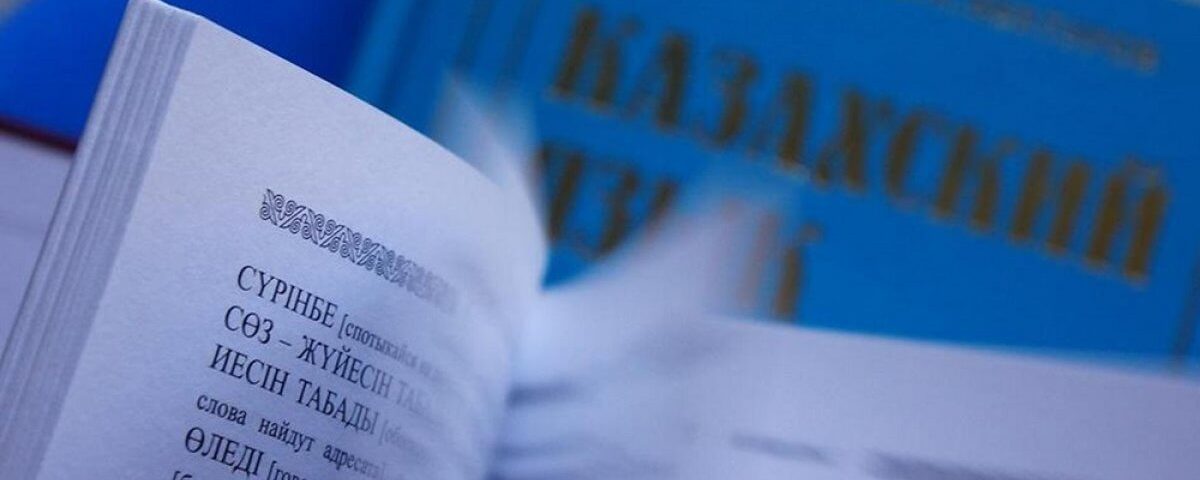Since independence in 1991, the government of Kazakhstan has been promoting Kazakh as the primary language of the state, culture, and education. Efforts have been made to expand Kazakh-language education and increase its use in public and official domains. The country’s Constitution designates Kazakh as the state language, while Russian is recognized as the language of interethnic communication. Russian is used in government documents and is still widely used in everyday communication.
Although census data on language can offer useful information, it has limitations and may not always be fully reliable in reflecting the true linguistic situation. This is caused by factors like self-reporting biases, political sensitivities, and different types of complexities associated with a multilingual society, such as Kazakhstan’s. Thus, for instance, people filling out the census often tend to over- or under-report their proficiency in certain languages due to social, political, or cultural circumstances. For example, according to the 2021 census, 99.1% of the ethnic Kazakh population in Kazakhstan claimed Kazakh as their mother tongue. Moreover, the reported proficiency in Kazakh among other ethnic groups appears to be very high and might be overestimated by respondents’ feelings about presenting themselves as proficient Kazakh language speakers (Census, 2021).
This same bias can also be created by the government at certain levels, which may feel the urge to emphasize the effectiveness of their work in promoting the Kazakh language. The census data also appear to over-report English proficiency in Kazakhstan. For instance, according to the 2021 census, over one-third (35.1%) of the population claimed to be able to understand spoken English, and nearly one-fifth (18.1%) reported high proficiency, stating they could speak and write in English (Census, 2021). However, these figures somewhat do not fully match with the English Proficiency (EP) Index, where Kazakhstan ranked 104th out of 213 countries and was categorized as a country with a low English proficiency rate (EF EPI, 2023).
One of the practical and reliable sources of data on language use in a multilingual society is the choice of the language of education. Firstly, the language selected for primary education often reflects the government’s language policy and national priorities. It indicates which languages are promoted and regarded as essential for literacy and social integration (Spolsky, 2007). The promotion of Kazakh as the primary language of instruction in Kazakhstan reflects a deliberate action of restoration of the status of the language after it was suppressed by the Soviet government in the USSR. In more recent discourse, the promotion of the Kazakh language as the main language of instruction in the education system has been viewed as a nation-building effort.
Secondly, the language of instruction used in primary education shapes the early language acquisition and proficiency of children, especially among younger generations. Children typically become proficient in the language of instruction, making it an important factor in shaping future language use in communication. The language learned during primary education is often the one used in public life and work in later years (Spolsky, 2007). Thirdly, the choice of language in education is a powerful tool for the projection of the future linguistic landscape of society. The main language in which the younger generation is proficient is most likely to become the dominant language of society in the future (Fishman, 1991). Moreover, the trends in the linguistic choice of education accurately reflect the expectations of the current generation regarding the linguistic configuration of society.
A study shows that over the years of independence since 1991, as expected, trends have been established that indicate Kazakh school enrollment numbers soared from 32.4% to 66.0% between 1991 and 2019, accompanied by a sizable drop in Russian school enrolments from 66.1% to 29.5%. Interestingly, there has been also an increase in other small minority ethnic language schools from 2.6% to 4.5%. Similar trends are also present in higher education enrollment since 1991 and Kazakh language higher education currently holds about two-thirds of the total university enrollment in the country (Suleimenova and Akanova, 2023). Currently, there are 6,950 schools in Kazakhstan, 3,606 of which offer mixed instruction in both Russian and Kazakh, while 1,121 schools provide instruction only in Russian. Despite the general declining trend, Kazakhstan has by far the largest number of Russian and mixed language schools compared to the rest of the Central Asian states (Profile.ru, 2023).
Not surprisingly, the linguistic trends are primarily linked to the significant demographic shifts that Kazakhstan experienced in the 1990s and 2000s. In particular, the demand for Kazakh-language schools and education has increased in proportion to the growth of the ethnic Kazakh population. For instance, in 1989, ethnic Kazakhs made up only 39.7% of the country’s population, while ethnic Russians accounted for 37.82%. Due to the large-scale emigration of ethnic Russians and other minorities, by 1999 the share of Kazakhs had risen to 53.4%, while the share of Russians had dropped to 30%. This trend continued, with the Kazakh population reaching 63.7% in 2009 and 70.35% in 2021 (Census, 2009, 2021). As the primary and almost exclusive custodians of the Kazakh language, ethnic Kazakhs drove the increasing demand for Kazakh-language education in the country. The demographic data gives reasons to expect further growth in demand for school education in Kazakh rather than in Russian language. Thus, in the 2021 census, ethnic Kazakhs made up almost 80% of the youngest pre-school age group (1-4 years), a significant increase from the 2009 census, when they accounted for 72.7% (Census, 2009, 2021). The share of ethnic Kazakhs among younger age groups is consistently higher than their overall share in the total population, which is due to higher birth rates among the Kazakh population.
It is worth mentioning that although education in the Kazakh language is still on the rise, the rate at which it is increasing is not as fast as before. For instance, around 75% of the students graduating and taking the Unified National Testing (UNT) in 2024 chose to make it in Kazakh language, 25% chose Russian as the language of the UNT while only 0.2% did it in English. For instance, ten years ago in 2014 around 70% of the school graduates took the UNT in Kazakh (National Test Center, 2024). Although there were rapid shifts in the linguistic landscape of Kazakhstan’s educational system during the 1990s and 2000s, characterized by a diminishing role of Russian-language education and an increasing share of Kazakh-language education, this process has shown signs of deceleration in recent years. As mentioned earlier, the proportion of Kazakh and Russian languages in Kazakhstan’s educational system appears to be closely tied to the ethnic composition of the country’s population.
It is also interesting to note that factors beyond ethnic composition are at play. The urban versus rural environments also seem to shape the linguistic configuration of education in Kazakhstan. As one might expect, the share of Kazakh-language education is lower in cities than in rural areas. For instance, in 2023, around two-thirds (67%) of school graduates took the UNT in Kazakh, while in rural areas this number was 87%. On the other hand, the process of increasing the share of Kazakh-language education has progressed twice as fast in urban areas compared to rural areas since 2014. These trends are also largely linked to the factor of ethnic composition, as rural areas in Kazakhstan are predominantly Kazakh in ethnic terms, while cities tend to be much more diverse, with larger shares of the Russian population and other ethnic minorities. However, it is difficult to explain why, in this case, the largest urban areas like Almaty and Astana have a relatively low share of students graduating from Kazakh-language schools, despite receiving large numbers of internal migrants from rural areas. For instance, in 2023, about 58% of school graduates in Astana and 56% in Almaty opted to take the UNT in Russian (National Test Center, 2023). These cities have long been the leaders in Kazakh population growth due to the large influx of people moving from villages. In other words, urban areas in Kazakhstan appear to be centers of linguistic diversity and show a strong presence of the Russian language.
One of the explanations can be the so-called “language shift” or “linguistic displacement” effect. This situation usually takes place when people perceive greater economic, social, or political benefits from adopting a foreign language (e.g. Russian). This effect is mostly economically driven because people often tend to view language as a tool for economic advancement, and languages that offer access to larger markets or international networks become more attractive. This leads to a “commercialization” of language, where the value of the language becomes dependent on its practical benefits in the global job market. This effect seems to be strong in Kazakhstan also due to its relatively small size in a globalized world. Smaller nations often feel pressured to adopt a more global lingua franca and find it more difficult to re-establish their national identity through the restoration of their language. The choice of language for education appears to be a particularly sensitive issue in the context of education, as it is often seen as a dilemma between the economic benefits—one of the primary purposes of education—and the commitment to restoring and preserving national identity. The issue is further aggravated by the fact that the discussion around language use in Kazakhstan has recently been framed within the decolonization discourse. This has strengthened public support for the promotion and development of the Kazakh language as a key part of Kazakh identity, with the education sector being one of the main arenas for this effort. The major cities of Kazakhstan, which have played a leading role in integrating the country’s economy into the global economy during its transition to a market economy, now seem to act as a counterbalance in the nationwide expansion of Kazakh-language education since independence. This likely reflects differing public perceptions of language as part of national identity and its role in education between globalized cities and the hinterlands, which aligns with global trends.
In the more than three decades since independence, the Kazakh language has made significant strides in expanding its presence in the education system, as well as in other aspects of life in Kazakhstan. This process has been primarily driven by the changing ethnic composition of the population, further propelled by state policies promoting the Kazakh language. Further advancements in Kazakh-language education are expected in line with demographic trends in the country. These trends are not spatially uniform across the country, with large cities being more linguistically diverse and less responsive to the nationwide trend of Kazakhization in education and national identity building.
References:
Census (2009). Results of the National Population Census 2009. Retrieved from https://stat.gov.kz/ru/national/2009/general/. Accessed on 19.09.2024.
Census (2021). Results of the National Population Census 2021. Retrieved from https://stat.gov.kz/en/national/2021/. Accessed on 19.09.2024.
EF EPI (2023). The world’s largest ranking of countries and regions by English skills. Retrieved from https://www.ef.com/wwen/epi/. Accessed on 23.09.2024.
Fishman, Joshua A. (1991). Reversing language shift: Theoretical and empirical foundations of assistance to threatened languages. Clevedon (England) & Philadelphia: Multilingual Matters, 1991. pp. xiii + 413.
National Test Center (2023). Statistics of the UNT. Retrieved from https://testcenter.kz/ru/stats/statisticheskie-dannye-ent/. Accessed on 22.09.2024.
Profile.ru (2023). Kazakhstan is the champion of Central Asia in terms of the number of Russian schools. Retrieved from https://profile.ru/society/kazahstan-chempion-centralnoj-azii-po-kolichestvu-russkih-shkol-1371174/. Accessed on 22.09.2024.
Spolsky, Bernard (2007). “Language policy”. International Journal of Applied Linguistics, 17(2), 268–270.
Suleimenova, Eleonora and Dana, Akanova (2023). “Russian Language in the Dominant Communicative Sphere of Education in Kazakhstan”. Chin. J. Slavic Stu., 2023; 3 (1): 68–85. https://doi.org/10.1515/cjss-2023-0002.
Note: The views expressed in this blog are the author’s own and do not necessarily reflect the Institute’s editorial policy.

